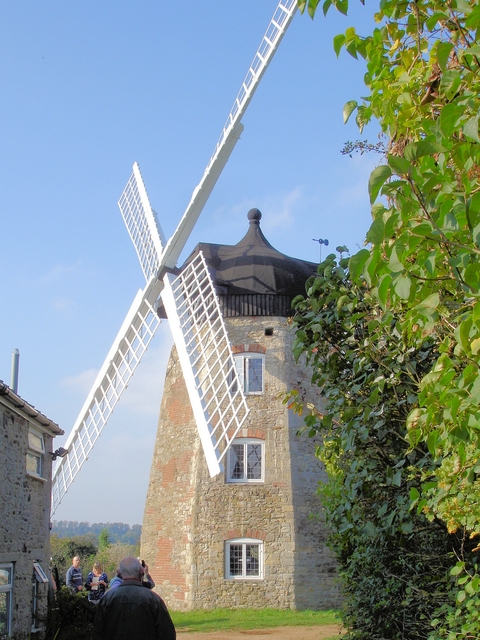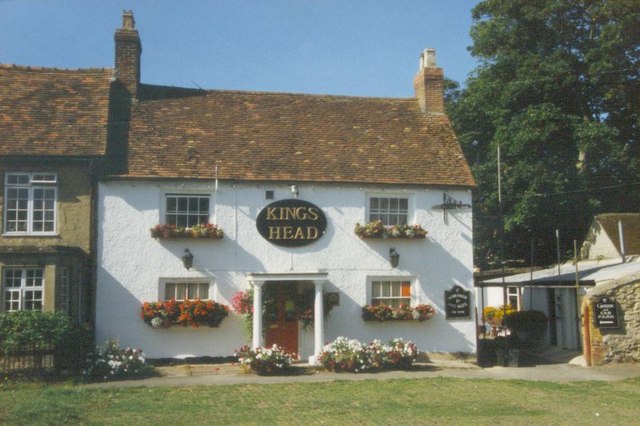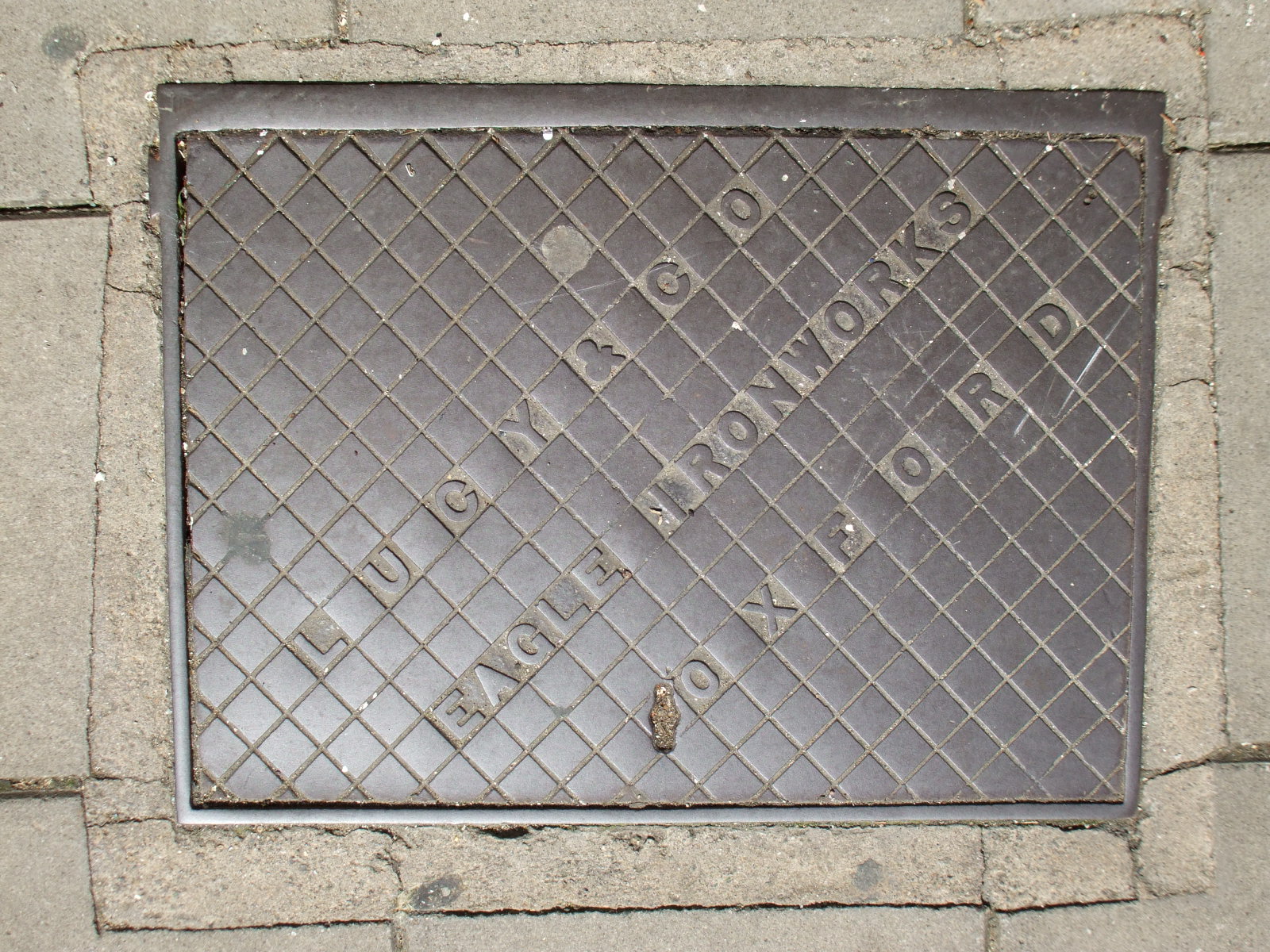|
Littleworth, South Oxfordshire
Littleworth is a hamlet in South Oxfordshire, about east of Oxford, England. It is in Wheatley civil parish, immediately west of Wheatley village. History There were two windmills on the hill about south of the hamlet. One was a post mill that burned down in 1875. The other, Wheatley Mill, is an octagonal tower mill that dates from before 1671. It has been rebuilt and re-equipped a number of times, including in 1763 after a fire and in 1784 when the Eagle Ironworks, Oxford supplied some of the machinery. The tower mill had fallen out of use by 1914, and lightning struck it in 1939. Since 1976 the windmill has been under restoration. The mill is open to the public one Sunday a month from May until October. In 1864 an extension of the Wycombe Railway from to was built through Littleworth. British Railways closed the line and Wheatley station in 1963. Most of its route through Littleworth was in a cutting, with single-arched brick bridge that still carries Littleworth Road ov ... [...More Info...] [...Related Items...] OR: [Wikipedia] [Google] [Baidu] |
Wheatley, Oxfordshire
Wheatley is a village and civil parish in Oxfordshire, about east of Oxford. The parish includes the hamlet of Littleworth, which is immediately to the west of Wheatley village. The 2011 census recorded the parish population as 3,913. Archaeology There was a Roman villa on Castle Hill, about southeast of the parish church. It was excavated in 1845, when Roman coins dating from AD 260 to 378 and fragments of Roman pottery and Roman tiles were found. Manor The village had its beginnings in the Anglo-Saxon era. It is in a valley running eastwards, the stream of which flows through the centre of the village to join the River Thame, a tributary of the River Thames. The stream used to be in the open, with stepping stones for people to cross it. However, it is now in a culvert that runs along under the High Street. In 1883 a Saxon cemetery was excavated, and artefacts removed from it are housed in the Ashmolean Museum in Oxford. In the 13th century Wheatley was part of the prop ... [...More Info...] [...Related Items...] OR: [Wikipedia] [Google] [Baidu] |
Tower Mill
A tower mill is a type of vertical windmill consisting of a brick or stone tower, on which sits a wooden 'cap' or roof, which can rotate to bring the sails into the wind.Medieval science, technology, and medicine: an encyclopedia (2005), 520 This rotating cap on a firm masonry base gave tower mills great advantages over earlier post mills, as they could stand much higher, bear larger sails, and thus afford greater reach into the wind. Windmills in general had been known to civilization for centuries, but the tower mill represented an improvement on traditional western-style windmills. The tower mill was an important source of power for Europe for nearly 600 years from 1300 to 1900, contributing to 25 percent of the industrial power of all wind machines before the advent of the steam engine and coal power. It represented a modification or a demonstration of improving and adapting technology that had been known by humans for ages. Although these types of mills were effectiv ... [...More Info...] [...Related Items...] OR: [Wikipedia] [Google] [Baidu] |
Great Milton
Great Milton is a village and Civil parishes in England, civil parish in Oxfordshire, about east of Oxford. The United Kingdom Census 2011, 2011 Census recorded the parish's population as 1,042. The School Great Milton church of England primary school is a prominent part of the village community with the only village tennis courts. History The Domesday Book of 1086 records that Remigius de Fécamp, Bishop of Lincoln held a large estate of 31 Hide (unit), hides of land at Great Milton. The estate had presumably belonged to the Mercian Diocese of Dorchester, Diocese of Dorchester, of which Remigius had been consecrated bishop in 1070. The see of Dorchester had been absorbed into that of Lincoln in 1072, and Remigius had been translated to Lincoln as bishop of the newly united diocese. The Domesday Book lists two water mills in the parish. By the time of the Hundred Rolls in 1279 there was a third watermill and in about 1500 there was a fourth mill. There is no known subsequent re ... [...More Info...] [...Related Items...] OR: [Wikipedia] [Google] [Baidu] |
Cowley, Oxfordshire
Cowley () is a residential and industrial area in Oxford, England. Cowley's neighbours are Rose Hill and Blackbird Leys to the south, Headington to the north and the villages of Horspath and Garsington across fields to the east. Internationally, Cowley is best known for its automotive industry - historically it was the home of the car manufacturer Morris (later absorbed into British Leyland, then the Rover Group), which has now evolved into Mini. History The Cowley area has been inhabited since Roman times. The line of a Roman road runs north-south along the eastern edge of Cowley. It linked a Roman town at Dorchester-on-Thames with a Roman military camp at Alchester near Bicester. A road called Roman Way follows part of its route. It is behind the Mini car factory, starting opposite the Stagecoach in Oxfordshire bus garage. Cowley coalesced from the former villages of Middle Cowley, Temple Cowley and Church Cowley (around St James church), though the ancient parish of Cowle ... [...More Info...] [...Related Items...] OR: [Wikipedia] [Google] [Baidu] |
Horspath
Horspath is a village and civil parish in South Oxfordshire about east of the centre of Oxford, England. The 2011 Census recorded the parish's population as 1,378. Archaeology The parish's western boundary largely follows the course of a Roman road that linked Dorchester on Thames and Alchester Roman Town. In the Romano-British period there were pottery kilns producing Oxfordshire red/brown-slipware at Horspath Open Brasenose. Production of red slipware had begun by about 240 and continued until the end of 4th century. Production at the Horspath kiln was from the mid-3rd century until the 4th century. A wide range of red-slipped tables wares, often decorated with rouletting, stamps or white slip, was produced in the Oxfordshire potteries and widely distributed across Britain during the 3rd and 4th centuries. A Romano-British pottery mould has been found at Horspath and Roman pottery has been found on the allotments and on the common to the north of the village. Manor In the ... [...More Info...] [...Related Items...] OR: [Wikipedia] [Google] [Baidu] |
Oxford Bus Company
Oxford Bus Company is the trading name of The City of Oxford Motor Services Ltd. Company Number 91106 It is a bus operator serving the city and surrounding area of Oxford, England. It is a subsidiary of the Go-Ahead Group. History Horse trams and horse buses The City of Oxford Tramways Company, City of Oxford and District Tramway Company served Oxford with Horsecar, horse-drawn trams from 1881. By 1898 its network served Abingdon Road, Banbury Road, Oxford, Banbury Road, Cowley Road, Oxford, Cowley Road, Walton Street, Oxford, Walton Street and both and railway stations. Horsebus, Horse bus services developed to complement the tramway network. By the early 20th century both Iffley Road and Woodstock Road, Oxford, Woodstock Road were horse bus routes. On Saturdays only there were horse buses from Headington to the city centre and from Cowley, Oxfordshire, Cowley village to the tram terminus in Cowley Road. In 1906 the City of Oxford Electric Traction Company took over from th ... [...More Info...] [...Related Items...] OR: [Wikipedia] [Google] [Baidu] |
Free House (pub)
A pub (short for public house) is a kind of drinking establishment which is licensed to serve alcoholic drinks for consumption on the premises. The term ''public house'' first appeared in the United Kingdom in late 17th century, and was used to differentiate private houses from those which were, quite literally, open to the public as "alehouses", "taverns" and "inns". By Georgian times, the term had become common parlance, although taverns, as a distinct establishment, had largely ceased to exist by the beginning of the 19th century. Today, there is no strict definition, but CAMRA states a pub has four characteristics:GLA Economics, Closing time: London's public houses, 2017 # is open to the public without membership or residency # serves draught beer or cider without requiring food be consumed # has at least one indoor area not laid out for meals # allows drinks to be bought at a bar (i.e., not only table service) The history of pubs can be traced to Roman taverns in B ... [...More Info...] [...Related Items...] OR: [Wikipedia] [Google] [Baidu] |
Public House
A pub (short for public house) is a kind of drinking establishment which is licensed to serve alcoholic drinks for consumption on the premises. The term ''public house'' first appeared in the United Kingdom in late 17th century, and was used to differentiate private houses from those which were, quite literally, open to the public as "alehouses", "taverns" and "inns". By Georgian times, the term had become common parlance, although taverns, as a distinct establishment, had largely ceased to exist by the beginning of the 19th century. Today, there is no strict definition, but CAMRA states a pub has four characteristics:GLA Economics, Closing time: London's public houses, 2017 # is open to the public without membership or residency # serves draught beer or cider without requiring food be consumed # has at least one indoor area not laid out for meals # allows drinks to be bought at a bar (i.e., not only table service) The history of pubs can be traced to Roman taverns in B ... [...More Info...] [...Related Items...] OR: [Wikipedia] [Google] [Baidu] |
British Rail
British Railways (BR), which from 1965 traded as British Rail, was a state-owned company that operated most of the overground rail transport in Great Britain from 1948 to 1997. It was formed from the nationalisation of the Big Four British railway companies, and was privatised in stages between 1994 and 1997. Originally a trading brand of the Railway Executive of the British Transport Commission, it became an independent statutory corporation in January 1963, when it was formally renamed the British Railways Board. The period of nationalisation saw sweeping changes in the railway. A process of dieselisation and electrification took place, and by 1968 steam locomotives had been entirely replaced by diesel and electric traction, except for the Vale of Rheidol Railway (a narrow-gauge tourist line). Passengers replaced freight as the main source of business, and one-third of the network was closed by the Beeching cuts of the 1960s in an effort to reduce rail subsidies. On privatis ... [...More Info...] [...Related Items...] OR: [Wikipedia] [Google] [Baidu] |
Wycombe Railway
The Wycombe Railway was a British railway between and that connected with the Great Western Railway at both ends; there was one branch, to . History The Wycombe Railway Company was incorporated by an act of Parliament passed in 1846. The act authorised the construction of a single line railway from the Great Western Railway's Maidenhead railway station, then located close to the site of the current Taplow railway station. In 1852 construction started; the first section to be built was between Maidenhead and High Wycombe, and opened for passenger services on 1 August 1854. It linked the town of High Wycombe with the Great Western Main Line, and the Great Western Railway operated the services for the Wycombe Railway company. The GWR had been built to Isambard Kingdom Brunel's broad gauge of , so the Wycombe Railway was also built to this gauge. In 1862, the Wycombe Railway opened an extension from High Wycombe via Princes Risborough to Thame. In 1863, it opened a branch line ... [...More Info...] [...Related Items...] OR: [Wikipedia] [Google] [Baidu] |
Eagle Ironworks, Oxford
The Eagle Ironworks was an ironworks owned by W. Lucy & Co. on the Oxford Canal in Jericho, Oxford, England. William Carter founded the works in 1812 with a shop in the High Street and moved it to its site beside the canal in 1825. It was on Walton Well Road at the northern end of Walton Street and backed onto St Sepulchre's Cemetery. The works ceased production in 2005, was demolished in 2007 and has since been redeveloped, mainly with apartments. History William Carter had an ironmongery shop in High Street, Oxford by 1812, when he founded an iron foundry in Summertown which was then a rural location north of Oxford. He moved the foundry to the banks of the Oxford Canal in 1825, one of the first developments in what is now the district of Jericho in central Oxford. The company specialised in iron castings including lamp-posts, manhole covers, ornamental ironwork and agricultural machinery. William Grafton became a partner and in 1830 Carter moved to the Eagle Foundry ... [...More Info...] [...Related Items...] OR: [Wikipedia] [Google] [Baidu] |
Wheatley Windmill, Wheatley, Oxfordshire
Wheatley Windmill is an 18th-century tower mill at between the hamlet of Littleworth and Wheatley in Oxfordshire, England. The windmill has an octagonal plan which narrows to form the circular rotating cap. History The first written evidence concerning the mill is dated 1671, describing it as being "in a ruinous condition" even then. In 1760, there was significant fire and wind damage. New machinery was installed in 1784, supplied by the Eagle Ironworks in Oxford. After 1914, the mill fell into disuse and disrepair. However, the Wheatley Windmill Restoration Society has been restoring the windmill since 1977 Wheatley Windmill, UK. and it is currently open to the public. The Mill Building The octagonal shape of this 18th-century tower mill ...[...More Info...] [...Related Items...] OR: [Wikipedia] [Google] [Baidu] |







.jpg)

